Enhancing your bike's performance can often be as simple as upgrading to straight spokes hubs, a choice that significantly impacts your cycling experience. Trifox's range of bicycle hubs offers the perfect blend of durability and performance, ideal for those looking to replace or upgrade their current setup.
Straight spokes hubs are a popular choice among cyclists for several reasons. Firstly, they provide improved wheel strength. Unlike traditional J-bend spokes, straight spokes experience less stress and are less likely to break under pressure, ensuring more resilience and a longer lifespan for your wheels. This design enhances the overall robustness of the wheel, making it suitable for both road and off-road cycling.
Another advantage is the improved aerodynamics offered by straight spokes hubs. With fewer protruding elements, these hubs reduce air resistance, allowing for smoother and faster rides. This is particularly beneficial for competitive cyclists aiming to shave seconds off their time.
Maintenance is also easier with straight spokes hubs. Their simple design reduces the need for frequent adjustments and repairs, allowing you more time on the road and less in the workshop.
Trifox's hubs, made from durable aluminum, are compatible with most standard bikes, making them a versatile choice for various cycling styles.
Choosing the right hub is crucial for maximizing performance. Consider factors such as the type of cycling you engage in and the compatibility of the hub with your bike.
By selecting the appropriate hub, you can ensure a seamless fit and optimal performance tailored to your specific needs.
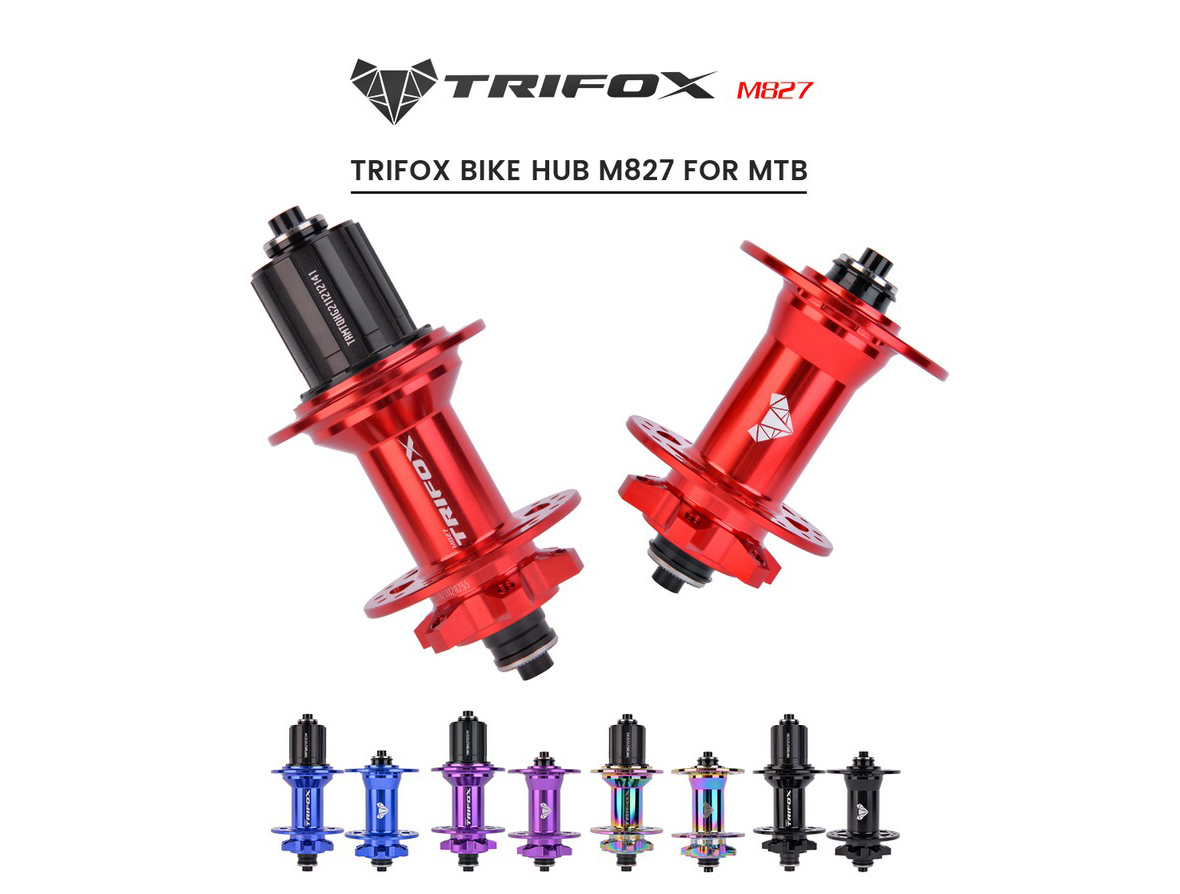
Overall, upgrading to straight spokes hubs is a smart investment in your cycling experience, offering enhanced strength, better aerodynamics, and reduced maintenance, all contributing to a more enjoyable and efficient ride.
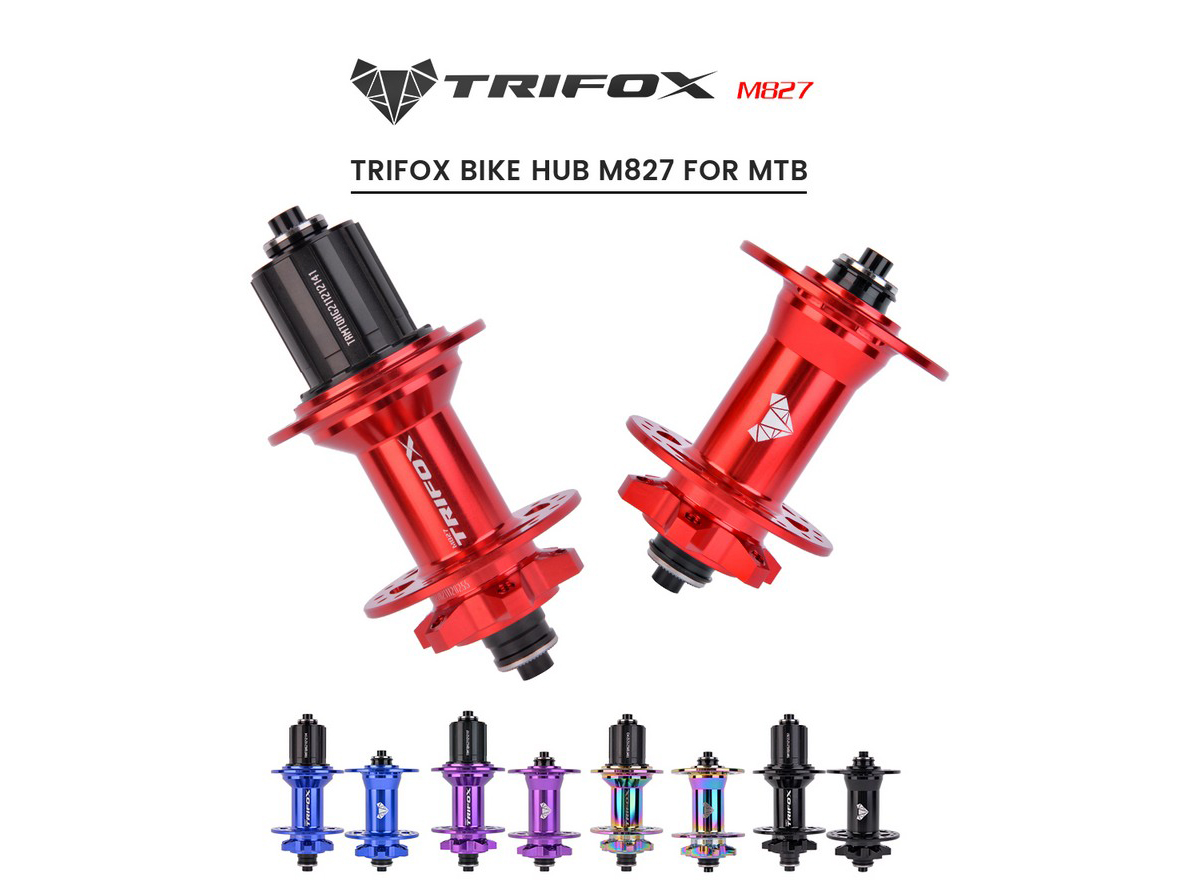
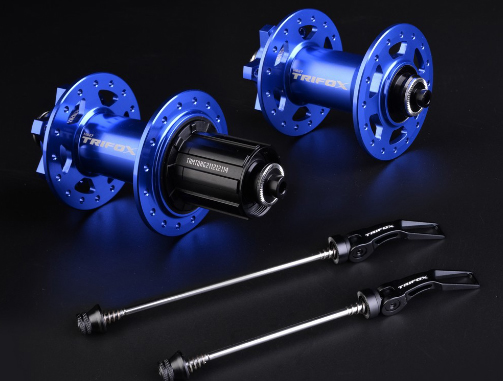
When it comes to mountain biking, the quality of your bike hub can make all the difference. The Trifox Bike Hub M827, with its 6 paw design and 72 clicks, ensures a smooth and responsive ride. Here’s a step-by-step guide on how to install and maintain this high-quality hub for optimal performance.
Installation
1. Gather Your Tools: You’ll need a few basic tools such as a wrench set, grease, and a bike stand to secure your bike during installation.
2. Remove the Old Hub: If you’re replacing an existing hub, start by removing the wheel from your bike. Use your wrench to loosen the nuts or quick-release skewer. Carefully remove the old hub.
3. Prepare the New Hub: The Trifox M827 comes equipped with front and rear hubs. Make sure you have both ready along with the provided quick-release skewers.
4. Install the Front Hub: Insert the front hub into the wheel, ensuring it fits snugly. Tighten the bolts or skewer to secure it in place.
5. Install the Rear Hub: Repeat the process with the rear hub. Align it properly to ensure smooth rotation. Make sure the hub is compatible with your drivetrain, whether it’s Shimano or SRAM.
6. Reattach the Wheel: Once both hubs are in place, reattach the wheels to your bike. Tighten all bolts and check for any play or wobble.
Maintenance
1. Regular Cleaning: Dirt and debris can affect the hub’s performance. Use a soft brush and mild detergent to clean the hub regularly.
2. Lubrication: To keep the 6 paw mechanism and bearings functioning smoothly, apply high-quality bike grease. This reduces friction and prevents wear.
3. Inspection: Periodically inspect the hub for any signs of wear or damage. Pay attention to the bearings and paw mechanism.
4. Adjustment: Over time, the hub may need slight adjustments. Use the provided tools to fine-tune the tightness, ensuring optimal performance.
Benefits
Using a high-quality hub like the Trifox M827 enhances your mountain biking experience. The 6 paw design offers quick engagement and the 72 clicks ensure precise control. Its compatibility with both Shimano and SRAM systems adds versatility. Moreover, the durable AL6061 + 7075 material guarantees longevity, allowing you to tackle rough terrains with confidence.
By installing and maintaining the Trifox Bike Hub M827, you’ll enjoy smoother rides, improved responsiveness, and a reliable performance that stands the test of time. Embrace the adventure with a hub that’s built for the thrill.
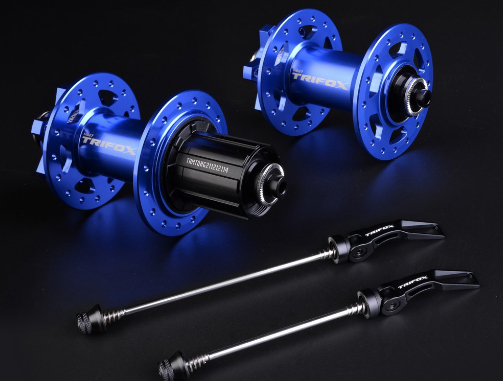
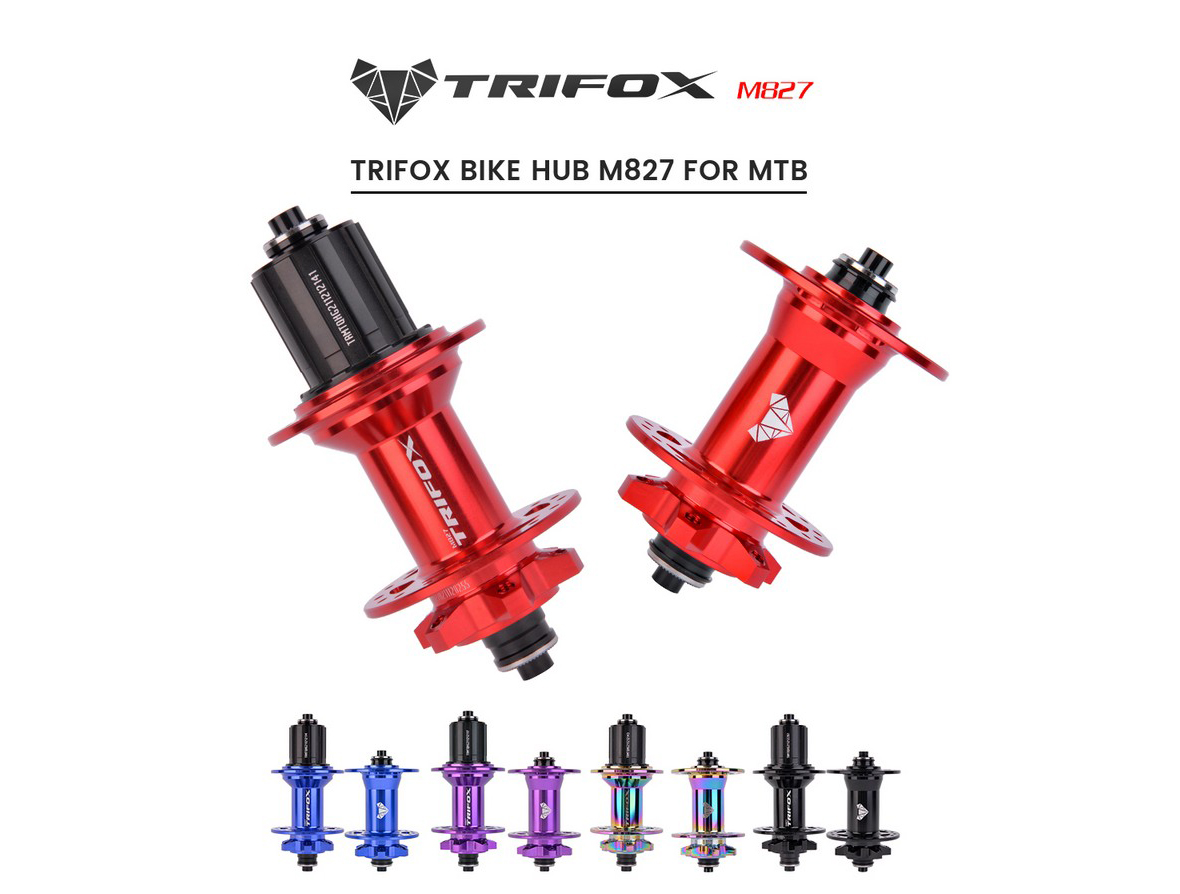
Installing and maintaining a 32H MTB hub is essential for ensuring smooth rides and extending your bike's lifespan. Here’s a step-by-step guide to help you get it right.
1. Installation
First, choose a high-quality hub like the Trifox M827 MTB Hub for reliability and performance. Begin by threading the axle through the hub shell, followed by securing the bearings in place. Attach the hub to your wheel rim using a spoke wrench, tightening each spoke evenly in a cross-three pattern to maintain wheel integrity.
2. Lubrication
Proper lubrication is crucial for smooth operation. Apply a thin layer of grease to the bearings and axle before installation. This reduces friction and prevents premature wear.
3. Alignment and Tensioning
Ensure the hub is centered and spokes are uniformly tensioned. Uneven tension can lead to wheel wobble and compromised performance. Use a truing stand to check for accuracy and make necessary adjustments.
4. Maintenance
Regular maintenance keeps your 32H MTB hub running smoothly. Clean the hub and surrounding components after every ride, especially in muddy or wet conditions. Periodically disassemble the hub to inspect and lubricate the bearings, replacing them if they show signs of wear.
5. Inspection
Check the hub for damage or loose parts regularly. Pay attention to any grinding noises or resistance while spinning the wheel, as these can indicate issues within the hub.
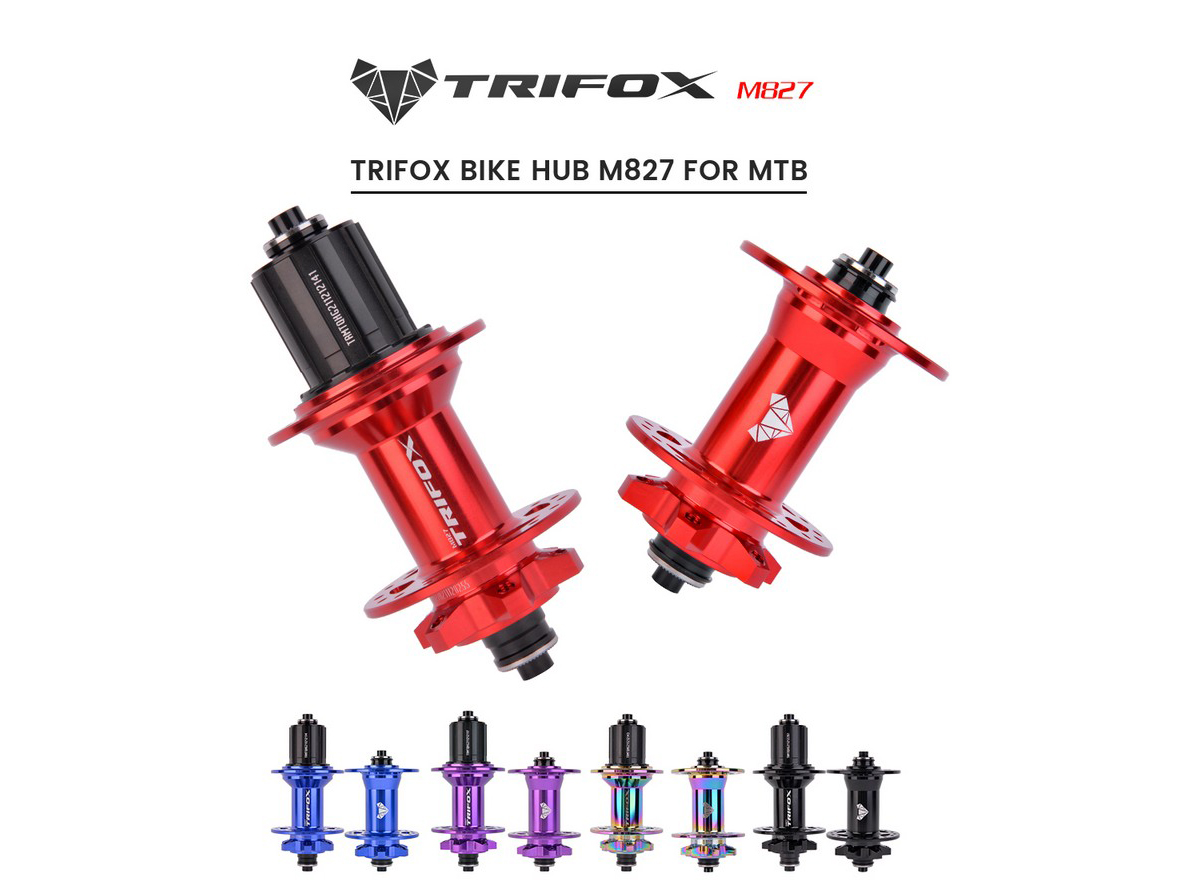
By following these steps, you can install and maintain a 32H MTB hub like the Trifox M827 effectively, ensuring a reliable and smooth ride on any terrain.
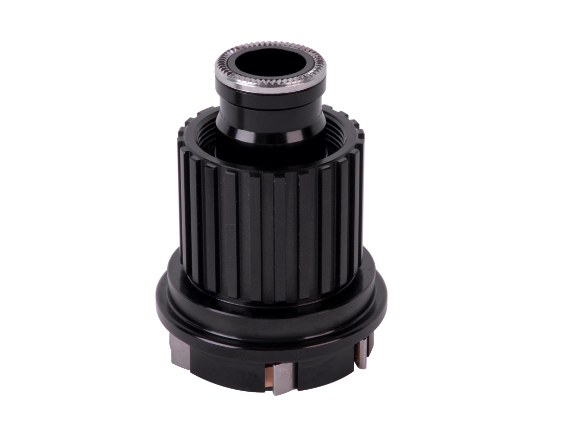
Replacing a freehub might seem daunting, but with the right tools and a bit of guidance, it’s a task any cyclist can handle. A well-functioning freehub ensures smooth shifting and efficient power transfer, making your rides more enjoyable.
1. Gather Your Tools
Before you start, ensure you have the necessary tools: a cassette removal tool, chain whip, hex keys (typically 10mm), a rubber mallet, and grease. Additionally, you'll need your new freehub, like the Trifox Freehub Body.
2. Remove the Rear Wheel
First, shift your chain onto the smallest cog to ease wheel removal. Release the quick-release lever or loosen the axle nuts, then carefully remove the rear wheel from the bike frame.
3. Remove the Cassette
Secure the cassette using the chain whip to prevent it from rotating. Insert the cassette removal tool into the lockring and turn it counterclockwise to loosen and remove the lockring. Carefully slide off the cassette cogs and spacers, keeping them in order for reassembly.
4. Remove the Old Freehub
With the cassette removed, locate the bolt that secures the freehub to the hub shell, typically accessible through the center of the hub. Insert the hex key or appropriate tool and turn counterclockwise to unscrew the bolt. Once loosened, gently tap the freehub with a rubber mallet if needed and slide it off the hub shell.
5. Prepare the Hub Shell
Clean the hub shell thoroughly to remove any dirt or debris. Apply a thin layer of grease to the interface where the new freehub will sit. This prevents corrosion and ensures a smooth installation.
6. Install the New Freehub
Align the new Trifox freehub with the hub shell and slide it into place. Secure it by tightening the fixing bolt clockwise using the hex key. Ensure it's snug, but avoid over-tightening as it can damage the freehub or hub shell.
7. Reinstall the Cassette
Slide the cassette cogs and spacers back onto the freehub body in the correct order. Tighten the lockring clockwise using the cassette removal tool until secure.
8. Reinstall the Rear Wheel
Place the rear wheel back into the bike frame. Tighten the quick-release lever or axle nuts securely. Check that the wheel is properly aligned and spins freely without rubbing against the brake pads or frame.
9. Final Check
Shift through all the gears to ensure smooth operation. Listen for any unusual noises and check that the freehub engages and disengages properly. If everything feels smooth, your replacement is successful.
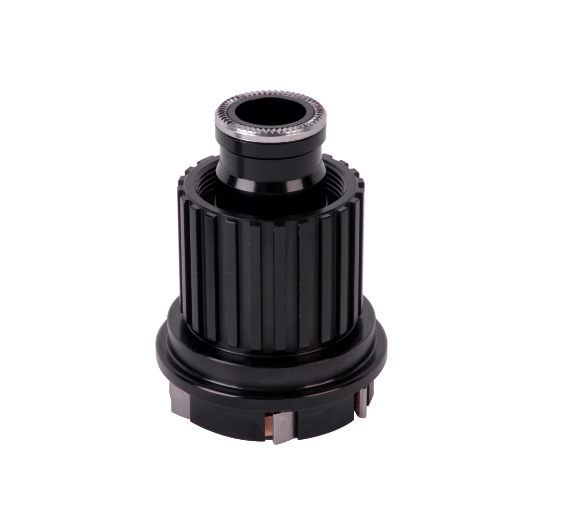
Replacing a freehub, such as the Trifox Freehub Body, is a straightforward process that can significantly enhance your bike's performance. With a few tools and some careful steps, you can ensure your bike is running smoothly and efficiently, ready for your next adventure. Happy riding!
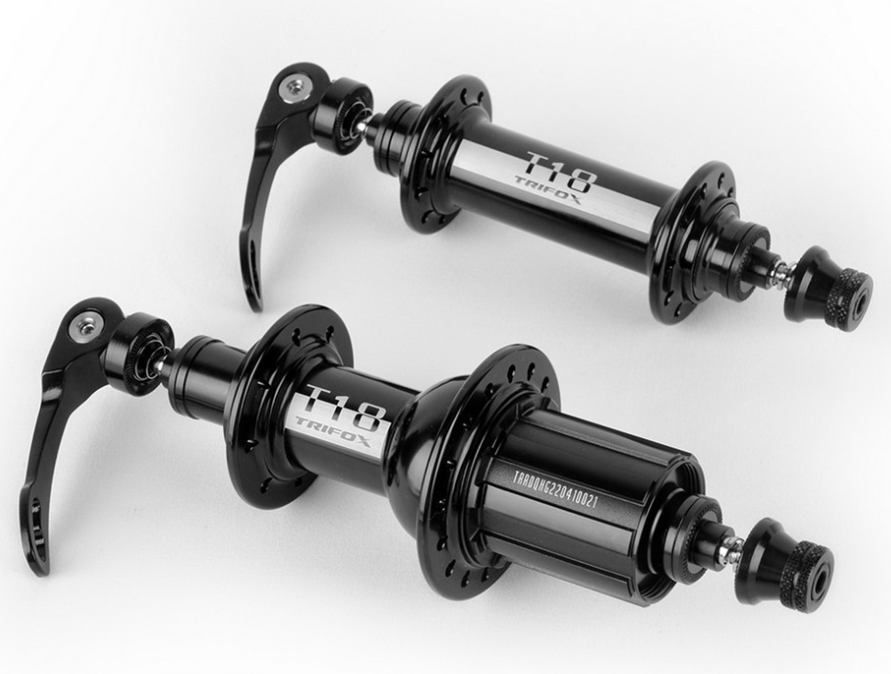
Maintaining and upgrading your Trifox freehub is essential for ensuring smooth, reliable performance on the trails and roads. Proper maintenance can extend the life of your components, while timely upgrades can enhance your riding experience.
Importance of Regular Maintenance
Regular maintenance of your freehub is crucial for several reasons:
Performance: A well-maintained freehub ensures smooth and efficient power transfer from your pedals to the wheels;Durability: Routine care prevents premature wear and tear, extending the lifespan of your freehub;Safety: Properly functioning components reduce the risk of accidents caused by sudden mechanical failures.
Steps to Clean and Lubricate Your Freehub
Remove the Freehub: Start by removing the rear wheel from your bike. Use a wrench to carefully unscrew the freehub from the hub body;Clean Thoroughly: Wipe down the freehub with a clean cloth to remove dirt and grime. Use a degreaser to clean the internal parts, ensuring all old lubricant and debris are eliminated;Inspect for Wear: Check the pawls and ratchets for signs of wear or damage. Look for any cracks or chips in the freehub body;Lubricate: Apply a light layer of freehub-specific lubricant to the pawls and ratchets. Avoid over-lubricating, as excess grease can attract dirt and cause buildup;Reassemble: Carefully reassemble the freehub and reinstall it onto the rear wheel. Ensure all parts are securely tightened.
Signs of Wear and When to Upgrade
Even with regular maintenance, freehubs can wear out over time. Here are some signs that it might be time to upgrade:
Noise: Unusual clicking or grinding noises indicate worn out or damaged pawls and springs;Slippage: If your pedals slip under pressure, the freehub's engagement mechanism may be failing;Difficulty Shifting: Hard-to-shift gears can signal internal issues within the freehub body.
Benefits of Upgrading
Upgrading to a higher-quality Trifox freehub offers several benefits:
Improved Performance: Enhanced engagement mechanisms provide quicker and more precise power transfer;Increased Durability: High-quality materials and construction mean longer-lasting components;Better Riding Experience: Smoother operation and reduced noise contribute to a more enjoyable ride.
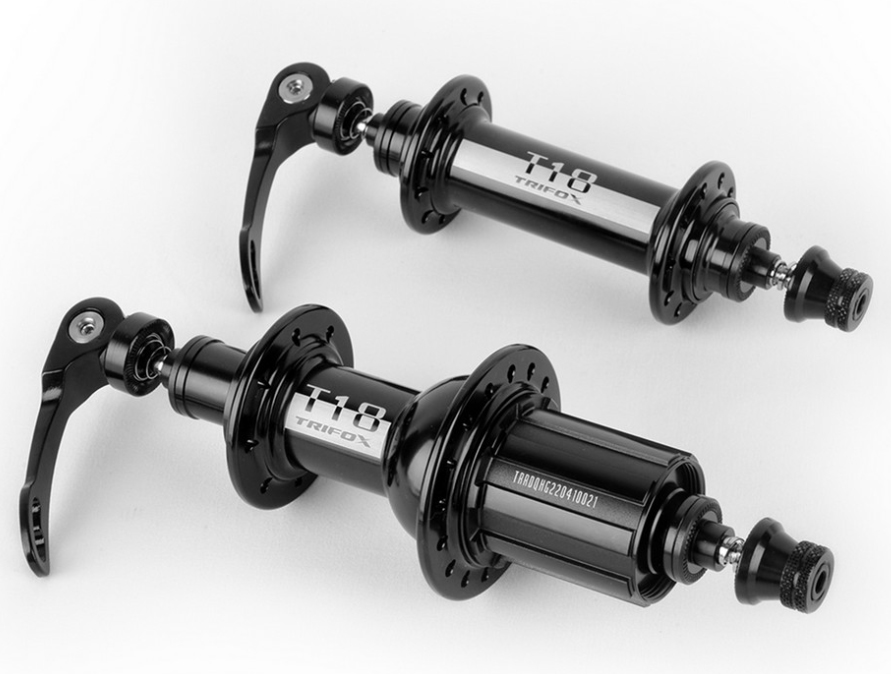
Conclusion
Maintaining and upgrading your Trifox freehub is a vital part of bike upkeep. By regularly cleaning and lubricating your freehub, inspecting for signs of wear, and upgrading when necessary, you ensure optimal performance and longevity. For a wide range of high-quality bike components, including freehubs, visit TrifoxBike. Keep your bike running smoothly and enjoy every ride to the fullest!
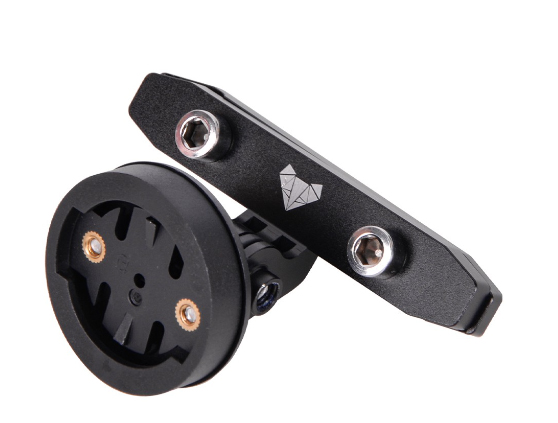
A bike board, often referred to as a bikepacking or adventure board, is essentially a platform that allows cyclists to attach gear, supplies, or even additional seating to their bikes. This versatile accessory makes it possible to transform your regular bike into a cargo-carrying beast, perfect for those who love to explore the great outdoors.
Choosing the Right Bike Board
1. Consider Your Bike Type and Size
The first step in selecting a bike board is to consider the type of bike you have. Different boards are designed to fit various types of bikes such as mountain bikes, road bikes, and touring bikes. Additionally, ensure that the board is compatible with the size of your bike frame to avoid any fitting issues.
2. Evaluate the Board's Weight Capacity
Before making a purchase, check the weight capacity of the bike board. It's crucial to choose a board that can handle the load you plan to carry. Overloading a bike board can lead to handling difficulties and potentially damage your bike.
3. Material Matters
Bike boards are typically made from materials like aluminum, plastic, or carbon fiber. Aluminum boards are durable and relatively lightweight, making them a popular choice for many cyclists. Plastic boards may be lighter but less durable, whereas carbon fiber offers the best strength-to-weight ratio but at a higher price point.
4. Ease of Installation
Look for a bike board that offers easy installation and removal. Some boards come with quick-release systems, allowing you to attach or detach the board without tools, which is especially handy if you're frequently switching between cargo-carrying and standard biking modes.
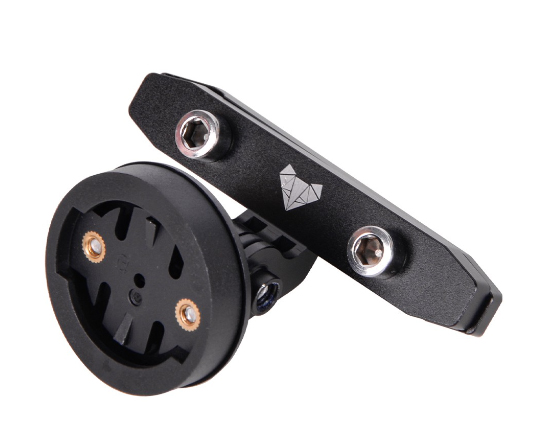
Using Your Bike Board for Outdoor Adventures
1. Packing Smart
When loading up your bike board, distribute the weight evenly to maintain balance. Heavier items should be placed closer to the bike frame, while lighter items can be positioned further out. This helps in keeping the bike stable and manageable, even on rough terrains.
2. Securing Your Load
Use bungee cords, straps, or cargo nets to secure your gear to the bike board. Ensure everything is tightly fastened to prevent items from shifting or falling off during your ride. It's also a good idea to check the security of your load periodically, especially after riding through bumpy sections.
3. Protecting Your Gear
Consider using waterproof bags or covers to protect your gear from the elements. Sudden rain showers or muddy trails can quickly soak or dirty your belongings, so it's best to be prepared.
4. Planning Your Route
With additional weight on your bike, it's important to plan your route accordingly. Opt for paths that are suitable for the added load, avoiding overly technical trails that could pose a challenge. Remember, the goal is to enjoy the journey as much as the destination.
5. Practice Makes Perfect
Before embarking on a long adventure, take a few short trips with your loaded bike board to get used to the handling differences. Practice maneuvering, braking, and turning with the extra weight. This will help you feel more confident and safe during your outdoor excursion.
6. Respect the Environment
While exploring the great outdoors, always follow Leave No Trace principles. Pack out what you pack in, minimize your impact on the environment, and respect wildlife and other trail users.
7. Be Prepared for Emergencies
Carry a basic repair kit, including tools for fixing flat tires, adjusting the bike board, and tightening bolts. Also, bring a first aid kit, extra water, and snacks. Being prepared can make all the difference in handling unexpected situations.
Choosing and using a bike board for your next outdoor adventure opens up a world of possibilities for exploration and fun. By carefully selecting the right board for your needs and following these tips for effective use, you'll be well-equipped to embark on memorable journeys across diverse landscapes.
Whether you're planning a multi-day bikepacking trip or a day-long excursion, a bike board can enhance your adventure, allowing you to carry everything you need to explore the great outdoors to its fullest.
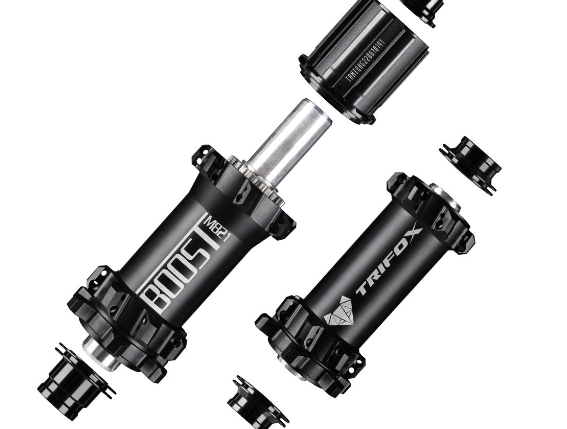
In the realm of mountain biking, the choice of each component on your bike plays a significant role in defining your ride's quality, performance, and durability. One such critical component that often goes underappreciated is the hub of a mountain bike. The hub sits at the core of your bike's wheels, influencing not only the wheel's performance but also affecting overall bike handling, acceleration, and efficiency.
Understanding the Role of MTB Hubs
At its essence, the hub is the central part of a bike's wheel, connecting the wheel to the bike's frame or fork via the axle. It allows the wheel to spin freely on two sets of bearings. For mountain bikes, hubs are designed to withstand the rough and tumble of off-road trails, providing a smooth ride over rocky paths, through mud, and across various terrains encountered on the trail. Thus, selecting a high-quality hub is paramount for any serious mountain biker.
Performance: The Key Considerations
When it comes to performance, several factors come into play. Firstly, the hub's engagement system is crucial. A hub with a higher number of engagement points can offer quicker response times when you start pedaling after coasting. This feature is particularly beneficial on technical trails where precise control over the bike is needed.
Secondly, the weight of the hub influences the overall weight of the bike. While lighter hubs contribute to a more nimble and responsive ride, it's essential to balance weight with the strength and durability required for mountain biking.
Lastly, the type of bearings used in the hub affects performance. Sealed cartridge bearings are commonly found in high-quality hubs due to their durability and resistance to elements like dust and water, ensuring a smoother ride and longer lifespan.
Durability: Built to Last
Mountain biking by its very nature subjects bikes to harsh conditions, making durability a non-negotiable aspect when selecting components. The material of the hub plays a significant role in its durability. High-quality materials such as aluminum and carbon fiber are favored for their combination of strength and lightweight properties. Furthermore, the construction of the hub, including how well it seals against dirt and moisture, directly impacts its longevity and maintenance requirements.
Making the Right Choice
Given the diverse offerings in the market, how does one choose the right MTB hub? Here are a few guidelines:
- Engagement: Look for hubs with a high number of engagement points if you prioritize responsiveness and control.- Material and Construction: Opt for hubs made from durable materials like aluminum or carbon fiber, and pay attention to the quality of construction, especially the sealing systems.- Bearings: Prefer sealed cartridge bearings for their durability and ease of maintenance.- Compatibility: Ensure the hub is compatible with your bike's wheel size, brake type (disc or rim), and drivetrain specifications.

Conclusion
The hub may be a small component of a mountain bike, but its impact on the bike's performance and durability is substantial. By carefully considering factors such as engagement, weight, materials, and bearing types, you can select a hub that enhances your mountain biking experience.
Whether you're upgrading an existing bike or building a new one from scratch, investing in a high-quality hub is a step towards achieving the perfect balance of performance and durability on the trails. Remember, the right hub not only improves your ride today but also ensures countless adventures for years to come.

When it comes to cycling, the devil is in the details. Every component of your bike plays a critical role in its performance, and hubs are no exception. Hubs are the central part of your wheels, and choosing the right one can significantly enhance your cycling experience.
Understanding Bike Hubs
Bike hubs are the core of your wheels where the axle and bearings are located. They connect the wheel with the bike frame and allow the wheel to spin freely. The number of holes in a hub (like the 32H in Trifox Bike Hub M827) refers to the number of spokes a wheel has. Generally, more spokes mean a stronger but slightly heavier wheel, making a 32H hub a balanced choice for many riders.
Factors to Consider when Choosing a Bike Hub
1. Riding Style
Your riding style and discipline are crucial in determining the right hub. For example, mountain biking often requires durable hubs that can withstand rough terrains. In this regard, the Trifox Bike Hub M827, designed specifically for mountain bikes, is a solid choice.
2. Compatibility
Ensure the hub you choose is compatible with your bike's drivetrain and brake system. The Trifox Bike Hub M827 is compatible with Shimano 10/11 speed and SRAM XD Driver, offering versatility for different setups.
3. Material and Construction
The material and quality of construction significantly affect the durability and performance of the hub. The Trifox Bike Hub M827 is made from AL7075 Aluminum, known for its strength and lightness, which ensures durability without adding significant weight.
4. Bearing Type
Hubs typically come with either sealed cartridge bearings or loose ball bearings. Cartridge bearings, like the ones in the Trifox Bike Hub M827, are generally more durable and require less maintenance.
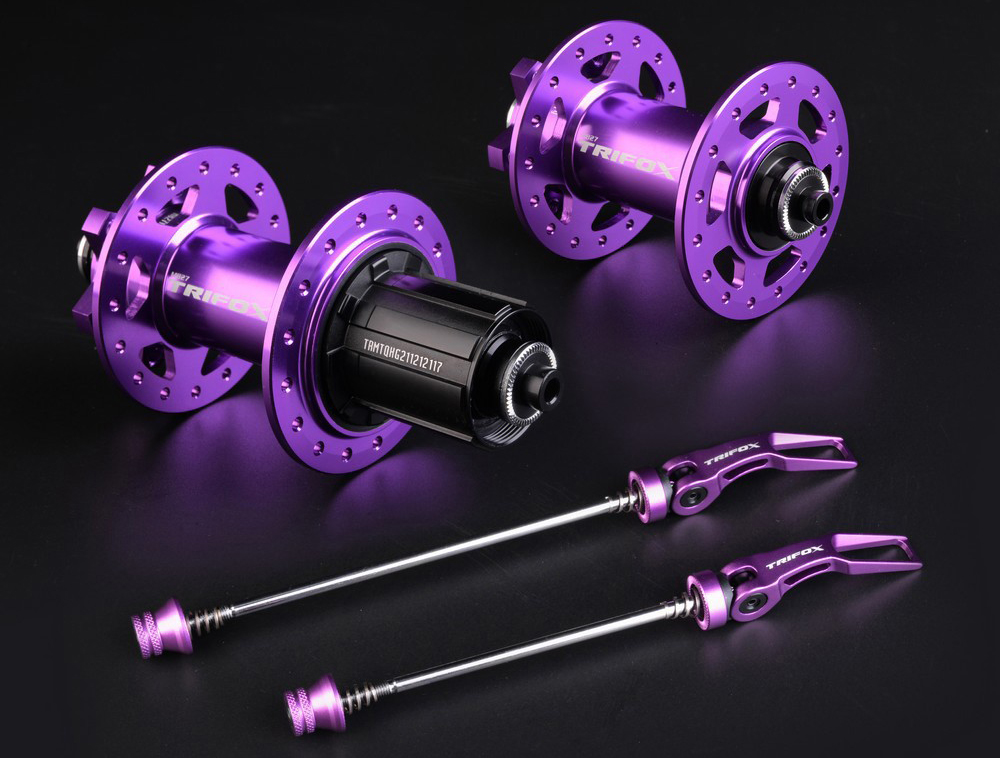
The Benefits of Choosing the Right Hub: Trifox Bike Hub M827
Choosing the right hub, like the Trifox Bike Hub M827, can offer several benefits:
- Improved Bike Performance: A well-made bike hub ensures smooth wheel rotation, reducing friction and enhancing your bike's overall performance.
- Durability: Quality hubs like the Trifox Bike Hub M827 are built to last, ensuring you can tackle even the toughest terrains with confidence.
- Better Control and Stability: The right hub improves wheel strength and stability, giving you better control over your bike.
In conclusion, choosing the right 32H bike hub involves considering your riding style, the hub's compatibility, material, construction, and bearing type. The Trifox Bike Hub M827 excels in all these areas, making it a fantastic choice for enhancing your cycling experience.
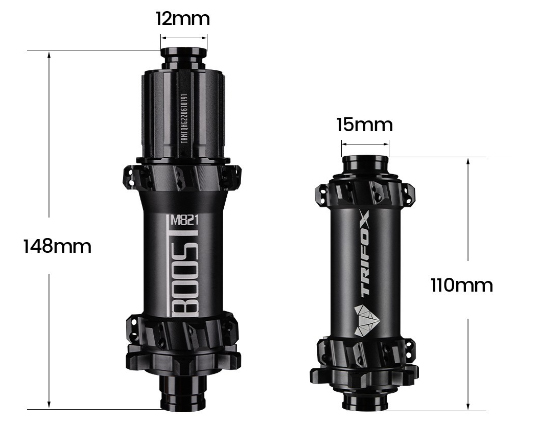
Mountain biking is an exhilarating sport that demands not only physical strength but also reliable equipment. One such piece of equipment that can significantly enhance your biking experience is a bike hub boost, such as the Trifox Bike Hub M821 Boost for MTB.
Installing the Trifox Bike Hub M821 Boost for MTB
Before you begin, it's important to note that installing a bike hub boost requires precision and some technical knowledge. If you're unsure, consider seeking assistance from a professional.
1. Remove the Old Bike Hub
Start with removing your wheel from the bike frame. Once done, use a cone wrench to remove the nuts holding the old hub in place. Carefully slide out the old hub, making sure not to lose any small parts like bearings or spacers.
2. Install the Trifox Bike Hub M821 Boost
Slide the Trifox Bike Hub M821 Boost onto the axle. Make sure the hub is centered on the axle before securing it with the provided nuts. Use a torque wrench to ensure the nuts are tightened correctly.
3. Reinstall the Wheel
Once the new hub is securely installed, reattach the wheel to your bike frame. Ensure it's properly aligned and that the quick-release or thru-axle is tightened securely.
The Benefits of a Bike Hub Boost
Installing a bike hub boost, like the Trifox Bike Hub M821 Boost, offers several benefits:
1. Improved Wheel Stiffness
A bike hub boost increases the distance between the flanges on the hub, which results in a wider bracing angle for the spokes. This improves wheel stiffness, offering better handling and control over rough terrains.
2. Enhanced Frame Design
The wider hub spacing allows for wider frame and fork designs, which can accommodate larger tires and offer improved suspension designs. This results in better traction and a smoother ride on rough trails.
3. Better Wheel Durability
The increased wheel stiffness from a bike hub boost also improves the wheel's durability. The wheels are less likely to go out of true or get damaged when riding over rough terrain.
4. Increased Bike Performance
Overall, installing a bike hub boost can significantly enhance your biking performance. It offers better control, stability, and durability, making your rides more enjoyable and efficient.
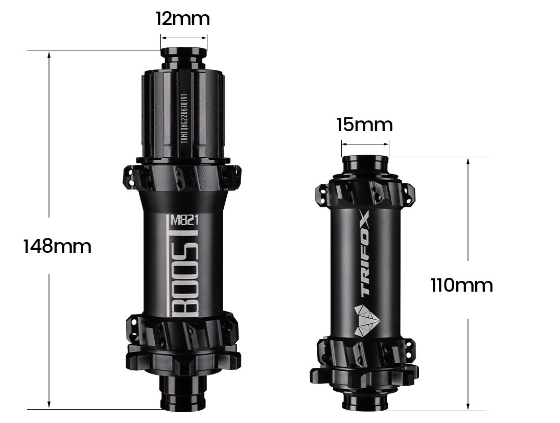
Installing a bike hub boost may require some effort, but the benefits it offers make it a worthwhile upgrade. The Trifox Bike Hub M821 Boost for MTB is a fantastic option that promises to enhance your mountain biking experience.

























































